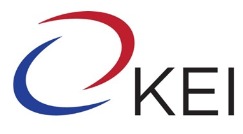1984 Posts located
Asia
1984 Posts located
April 2, 2025
January 4, 2024
December 19, 2023
November 30, 2023
This paper provides an analytical assessment of the implications for North and South Korea of recent changes in the Chinese-Russian and U.S.-Japanese security relationships.The evolution of these two security relationships…
March 25, 2007
During the past few years, the United States has begun three important initiatives that alter its defense commitment to South Korea (Republic of Korea [ROK]). First, Washington started to decrease…
January 25, 2007
In October 2006, Kim Jong-il’s North Korea again seized international attention. With its claimed underground nuclear test, Pyongyang upped the ante in its confrontation with the United States and the…
December 25, 2006
- « Previous
- 1
- …
- 143
- 144
- 145
From nuclear power in the United Arab Emirates to new free trade agreement negotiations opening with Israel, to South Korean President Park Geun Hye's visit to Iran, 2016 seems to be…
July 15, 2016
With no shortage of North Korean news in 2016, we look back at one of our interviews with Ambassador John Everard of the UK. He provides an inside perspective of…
July 7, 2016
After North Korea launched its fourth nuclear test in January 2016, an outraged international community once again cracked down, passing tough sanctions both at the UN and domestic levels. While…
July 1, 2016
In May 2016, Park Geun Hye became the first South Korean president to visit the African Union headquarters in Ethiopia. This trip, which also included stops in Uganda and Kenya,…
June 27, 2016
Last Thursday, Korean chipmaker SK Hynix made history by developing a 10-nanometer (nm) transistor process for 16 GB Double Data Rate 5 (DDR5), the latest iteration of dynamic random-access memory (DRAM) chips. By allowing for greater memory capacity and processing speeds for the corresponding central processing units (CPUs) that are used for cloud computation, this…
September 5, 2024
“You can either buy clothes or buy pictures.” (Gertrude Stein) The air will be filled with a different kind of buzz in Seoul this week as it hosts the third annual international art fair, Frieze Seoul. Over 110 leading art galleries worldwide will assemble for four days at the COEX Convention and Exhibition Center in…
September 5, 2024
The public sector financed 76 percent of healthcare in OECD countries in 2021 using compulsory health insurance and government programs (Figure 1, Panel A). Korea is an outlier in this regard, as only 62.3 percent of its health expenditures were covered through mandatory financing schemes. The low share of mandatory financing in Korea was offset…
September 4, 2024
The overwhelming majority of refugees who flee North Korea are generally those who live in border areas adjacent to China and do not have prominent government or economic positions. Few are from Pyongyang because it is very difficult for citizens to travel within the country unless police and internal security officials approve the travel. Meanwhile,…
